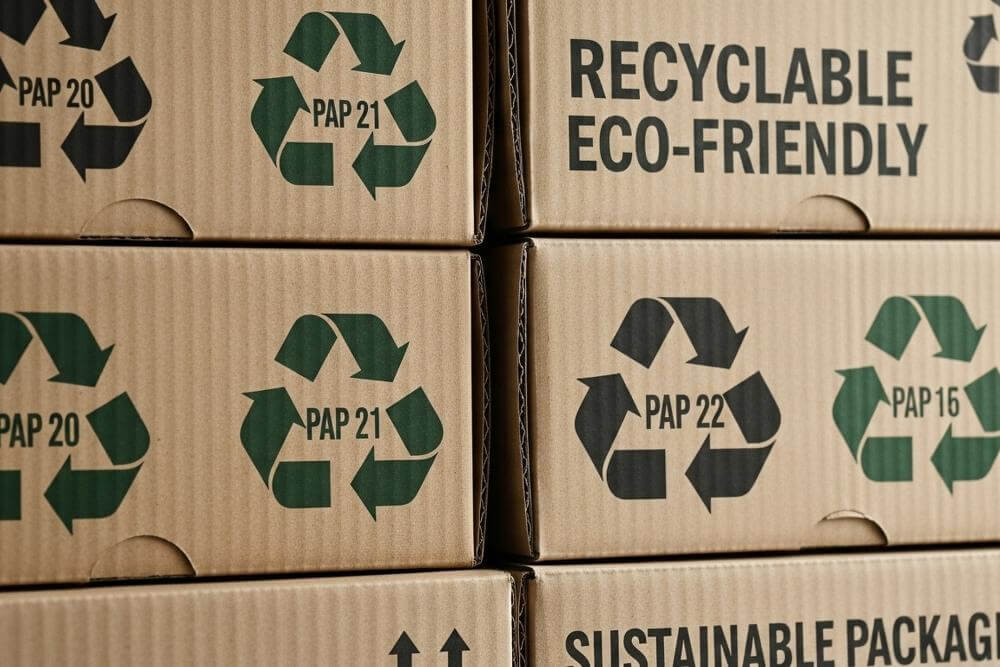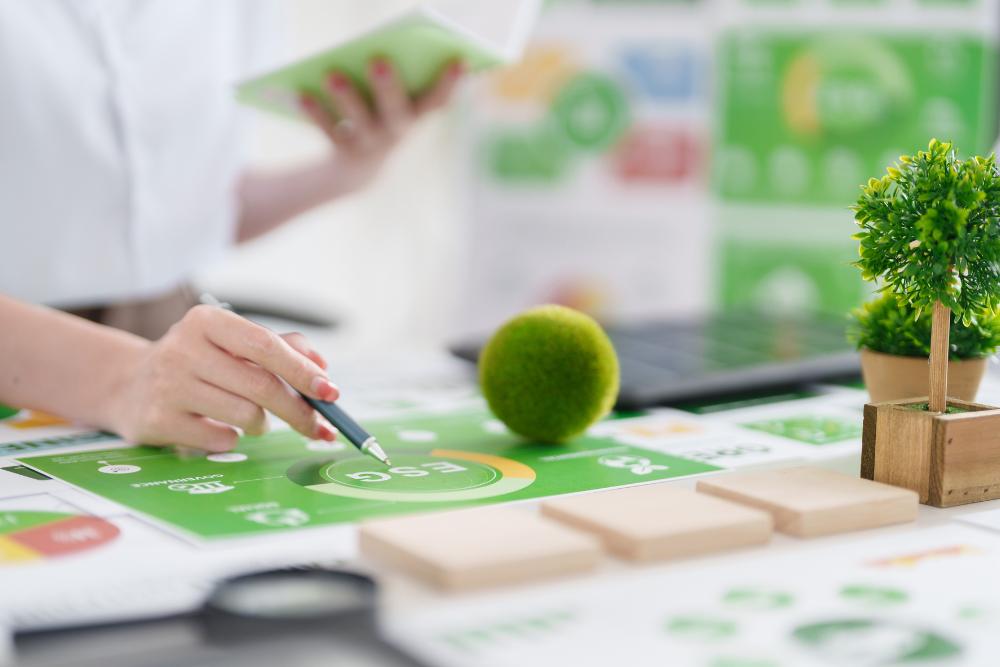
Sustainability claims are no longer enough. Across the construction and manufacturing sectors, architects, procurement frameworks, and major contractors are now asking for proof - and that proof increasingly comes in the form of an Environmental Product Declaration (EPD).
An EPD is more than a sustainability badge. It’s a transparent, independently verified report that quantifies the environmental impact of a product across its entire life cycle - from raw material extraction to end-of-life disposal. For manufacturers, it represents the gold standard in environmental transparency and accountability.
"An EPD is more than a badge. It’s an independently verified report showing the true environmental impact of your product across its entire life cycle - the transparency buyers and specifiers are now demanding."
An EPD is a standardised way to communicate a product’s environmental performance, following international standards such as EN 15804 and ISO 14025.
It’s built on a Life Cycle Assessment (LCA) - a scientific study that measures key impact areas such as carbon footprint, energy use, water consumption, and waste generation at each stage of production and use.
Once verified by a third party, the EPD provides a credible, comparable, and data-driven basis for sustainability claims - helping buyers make informed decisions and manufacturers demonstrate progress toward net-zero goals.
The push for net-zero procurement is transforming how supply chains operate. Major contractors, developers, and public sector bodies are increasingly specifying products with verified EPDs.
If your product contributes to construction, infrastructure, or public sector projects, an EPD is rapidly becoming a prerequisite for specification and tender eligibility.
Even outside construction, an EPD can give suppliers a competitive advantage by supporting:
Scope 3 emissions reporting: providing accurate data for your clients’ carbon disclosures.
ESG and sustainability reporting: enhancing credibility and transparency.
Market differentiation: demonstrating genuine commitment to environmental responsibility.
Customer confidence: showing that your sustainability claims are evidence-based, not marketing-led.
As net-zero frameworks tighten, the shift from “nice to have” to “must have” is well underway.
Developing an EPD can ensure you meet tender requirements, as well as providing an opportunity to understand and reduce the true environmental impact of your products.
By conducting a life cycle assessment, manufacturers often uncover key areas - processes or materials that drive emissions or waste. This insight enables targeted improvements, from material substitution to energy efficiency or logistics optimisation.
In turn, these improvements support long-term business goals. They can low operational costs, strengthen supply chain resilience, and help align with customer sustainability targets.
In an increasingly transparent market, EPDs strengthen trust, competitiveness, and compliance - helping you stay ahead of evolving legislation and procurement trends.
Although the process of developing an EPD can feel technical, with the right support it can provide a clear, structured pathway.
1. Define your product scope and boundaries – identify which product or product group you want assessed.
2. Undertake a Life Cycle Assessment (LCA) – collect data on materials, energy use, transport, and waste.
3. Work with an approved EPD programme operator – ensure the assessment follows recognised standards.
4. Submit for third-party verification – an independent expert validates the findings.
5. Publish your EPD – share it through the appropriate platform.
Each step strengthens your understanding of your product’s impact - and positions your business as a credible partner in low-carbon supply chains.
At Carbon Sense, we help manufacturers and suppliers prepare for the transition to verified product transparency.
Our consultants guide you through each stage - from Life Cycle Assessment and EPD development to carbon reduction planning and reporting alignment. Whether your goal is compliance, competitive advantage, or further decarbonisation, we can help you get there.
Contact Carbon Sense to discuss your next steps towards net-zero procurement.
1. Do I need an Environmental Product Declaration (EPD) for my product?
If your product is used in construction, infrastructure, or public sector projects, you may be required to have an EPD for tender eligibility. Many contractors, architects, and framework agreements now specify EPDs as a condition of procurement. For other sectors, an EPD isn’t always mandatory, but it can still offer a competitive advantage - particularly if your clients report Scope 3 emissions or have strong sustainability goals.
2. How much does it cost to develop an EPD?
The cost of developing an EPD varies depending on the complexity of the product, the availability of data, and whether you already have a Life Cycle Assessment (LCA) in place. In general, EPDs for standard product categories can be developed within a few thousand pounds, while complex or bespoke products may require more detailed analysis. The investment often pays off by opening access to new markets and tenders.
3. How long does it take to get an EPD?
The process typically takes three to six months, depending on how quickly data can be collected and verified. Working with experienced sustainability consultants can speed up this process, ensuring your data is accurate, compliant, and ready for third-party review. At Carbon Sense, we streamline each stage to help you publish verified EPDs efficiently and confidently.

Developing an EPD can ensure you meet tender requirements, as well as providing an opportunity to understand and reduce the true environmental impact of your products.

Understanding the Transition from SECR to UK SRS. The UK government is replacing the current Streamlined Energy and Carbon Reporting (SECR) framework with the more comprehensive UK Sustainability Reporting Standards (UK SRS).

As part of its Net Zero Supplier Roadmap, the NHS has announced that by April 2027, all suppliers, including those providing food, medical products, and services, will be required to submit a comprehensive Carbon Reduction Plan (CRP).

Carbon Sense is your expert partner in carbon reduction. We support UK organisations to understand, measure, and reduce their carbon footprint, save energy, and make sense of sustainability. With a practical, no-nonsense approach, we help you achieve Net Zero goals while protecting your bottom line.

"We are excited to support the awards this year and are honoured to sponsor the Carbon Positive category. At this crucial time, carbon mitigation and an embedded strategy to achieve Net Zero are vital to avoid further climate change catastrophes".

In a world increasingly focused on sustainability, Carbon Literacy has emerged as an essential tool for businesses seeking to reduce their environmental impact. Carbon Sense understands the value and benefits of Carbon Literacy Training whether for a team within your business, or for your entire organisation.

A carbon reduction or decarbonisation plan is a set of strategies and actions that an organisation, community, or government implements to reduce its carbon footprint and mitigate the effects of climate change.

Carbon credits, and their differences, is a frequent topic of discussion. When developing a sustainability strategy or communicating about sustainability, its essential for businesses to understand these differences

Pathway to Net Zero, launched in November 2023 is a fully funded support programme helping businesses adopt more environmentally conscious processes and move towards becoming Net Zero.

The future still remains uncertain so considering options to reduce energy consumption to rely less on the grid is becoming more and more necessary.

Climate change has become a key issue for us all. With scientific reports being released every day, we now know more about the changes that are happening to the Earth’s systems.

The impact of the industrial revolution has created a climate where pretty much all our activities have an impact on the environment.

By reducing your organisation’s carbon footprint you can reduce your impact on the environment and resources.

There is a wealth of research being undertaken by the leading academics studying climate change and assessing how we can build climate resilience and reduce risk.

It is important to get good advice to ensure that you avoid the common pitfalls and have a plan that works for you and achieves genuine environmental benefits.